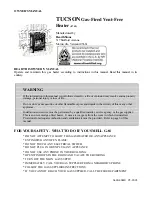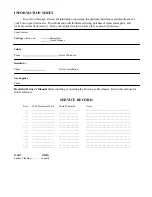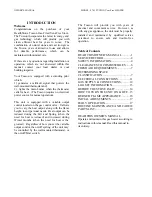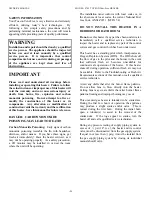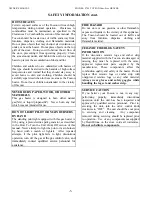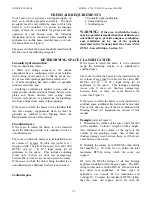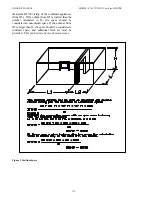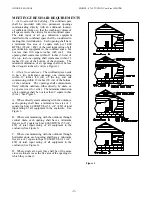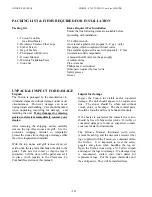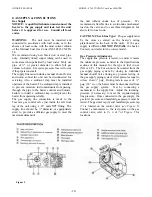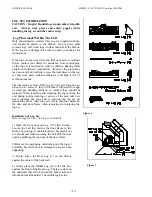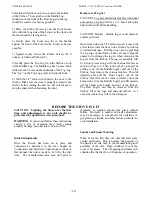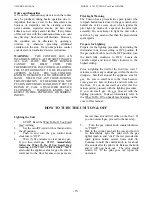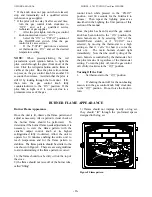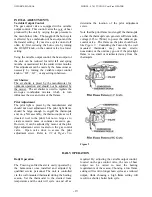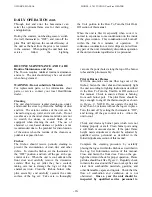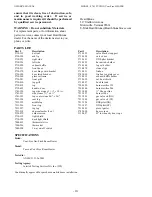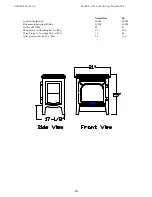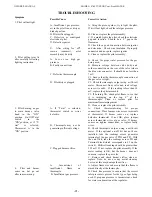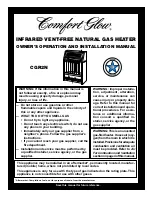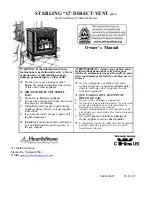
OWNER’S MANUAL MODEL: 8745 TUCSON Vent-Free HEATER
-7-
FRESH AIR REQUIREMENTS
Your Tucson stove requires an adequate supply of
fresh air to function properly and safely. The fresh
air supply must be met within the space in which the
heater is to be installed. To ensure an adequate
supply of fresh air is available for proper and safe
operation of your Tucson stove, the following
information must be considered when installing the
appliance in a mobile home, modular home, or an on-
site house, Refer to Figure 2.
The space in which the heater should be installed will
fall into one of the following categories:
1. Unusually tight construction
2. Unconfined space
3. Confined space
WARNING:
If the area in which the heater
may be operated is smaller than that defined as an
unconfined space, provide adequate combustion
and ventilation air by one of the methods
described in the National Fuel Gas Code ANSI
Z223.1, Latest Edition, Section 5.3.
DETERMINING SPACE CLASSIFICATION
Unusually tight construction
This is construction where:
a. Walls and ceilings exposed to the outside
atmosphere have a continuous water vapor retarder
with a rating of one perm (6 x 10
G
¹¹ kg per pa-sec-
m²) or less with openings gasketed or sealed, and
b. Weather-stripping has been added on openable
windows and doors, and
c. Caulking or sealants are applied to areas such as
joints around window and door frames, between sole
plates and floors, between wall ceiling joints,
between wall panels, at penetrations for plumbing,
electrical, and gas lines, and at other openings.
If the space in which the heater will be installed falls
into this category, supplemental fresh air must be
provided, as outlined in the Meeting Fresh Air
Requirements section of this manual.
Unconfined space
If the space in which the heater is to be installed
meets the following criteria, it is considered to be an
unconfined space.
The room in which the heater is to be installed has an
air volume of at least 50 cubic feet (cubic feet =
length x width x height of the space) for each 1000
BTU/hr (4.8 m³ / K. W.) input rating for all
appliances in the space. This includes adjoining
rooms only if there are door less passageways
between them, or there are vents between the rooms.
If the space in which the unit is being installed is an
unconfined space, additional fresh air is not needed.
Confined space
If the space in which the heater is to be installed
meets the following criteria, it is considered a
confined space.
The room in which the heater is to be installed has an
air volume of less than 50 cubic feet for each 1000
BTU/hr (4.8 m³ / K. W.) input rating for all
appliances in the space. This includes adjoining
rooms only if there are doorless passageways
between them, or there are vents between the
rooms.(See Figure 5).
If the space in which the heater is to be installed is a
confined space, additional fresh air must be provided.
This can be done by one of the ways outlined in the
Meeting Fresh Air Requirements section of this
manual.
Example
(refer to Figure 2)
I. Determine the volume of the space where the unit
will be installed. Volume = length x width x height.
Also included in the volume of the space is the
volume of any adjoining rooms, only if there are
doorless passage ways between them, or if there are
vents between the rooms.
II. Multiply the volume by 1000 BTU/hr, then divide
that number by 50 cubic feet, to obtain the total
maximum BTU/hr rating which the room can
support.
III. Add the BTU/hr ratings of all fuel burning
appliances installed within the same space. The BTU
rating for this unit is 20,000 BTU/hr. (Do not include
any direct vent appliances, as these types of
appliances use outside air for combustion and
venting).IV. Compare the maximum BTU/hr rating
that the room can support (from II.) with the

